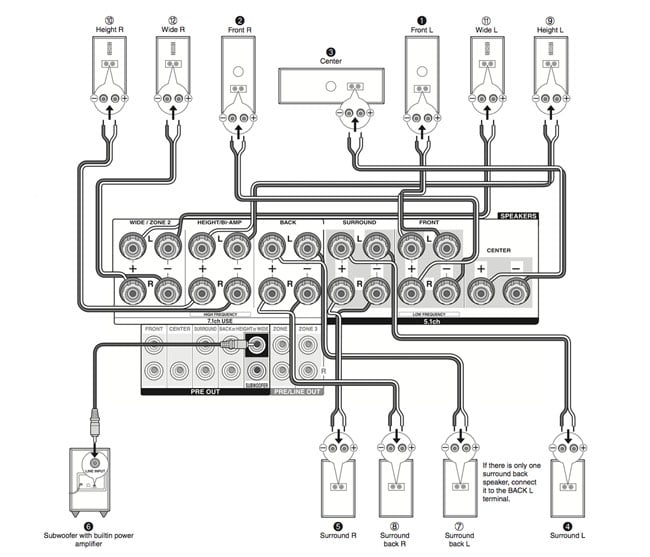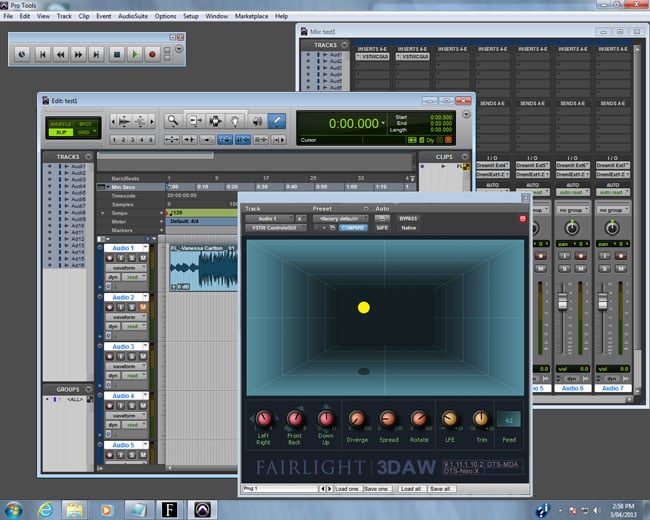Original URL: https://www.theregister.com/2014/10/16/is_living_with_dolby_atmos_worth_the_faff/
Is living with Dolby Atmos worth the faff?
Subtle, naturalistic ambiance – perfect for Transformers 4
Posted in Personal Tech, 16th October 2014 09:03 GMT
Breaking Fad I confess, I came to the home debut of Dolby Atmos spluttering with enthusiasm. Some of the best movie audio I’ve ever heard has been in Dolby Atmos equipped theatres and early demonstrations of the domestic version seemed tantalisingly authentic. My stereocilia positively craved this revolutionary, object-based sound system.
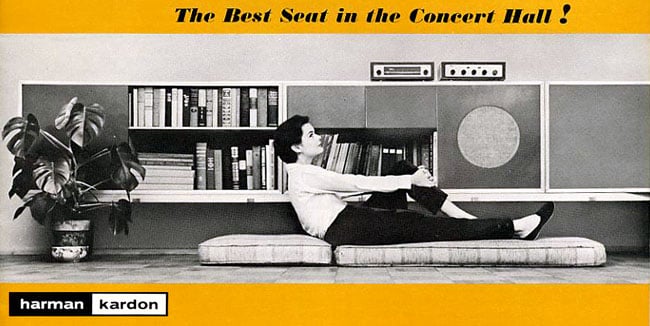
Finding the sweet spot is always a challenge with audio systems
Well, I’ve been living with domesticated Dolby Atmos for a couple of weeks now and while there are definitely thrills to be had, there are also caveats for fellow home cinema enthusiasts thinking of upgrading.
The AV receiver I’ve been playing with is the Onkyo TX-NR838. It’s a formidably specified, terrific sounding seven channel amp that retails for £1,000. If you want a cheaper Dolby Atmos receiver, Onkyo offers the £499 TX-NR636.
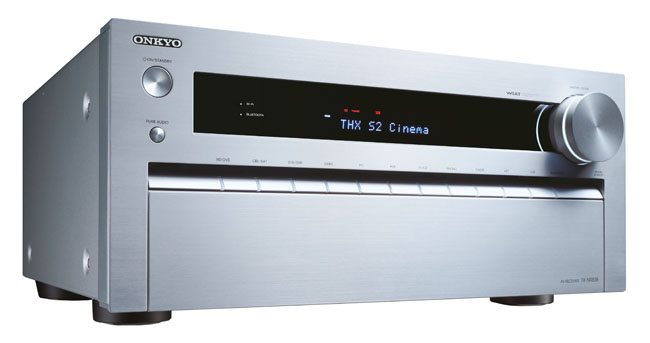
Onkyo TX-NR838 Dolby Atmos AVR
When you wire it up, you have the option of either a conventional 5.1 or 7.1 (side and rear back) surround speaker arrangement, or an Atmos configuration of 5.1.2 – the final two numbers represent the Atmos effect channels. Once you opt for Dolby Atmos, the receiver will downmix any native 7.1 channel Blu-rays you may have (which probably isn’t that many) to 5.1.
While not cheap, the receiver itself is as future proof as current silicon will allow. There are six rear-placed HDMI inputs, plus a front-facing Aux HDMI, so routing most things in shouldn’t be a problem. It’s also 4K friendly, with four HDMI 2.0 inputs and HDCP 2.2 (High-bandwidth Digital Content Protection) support on Input 3 (courtesy of Silicon Image chippery which supports 2160p/60fps with 4.2.0. chroma subsampling).
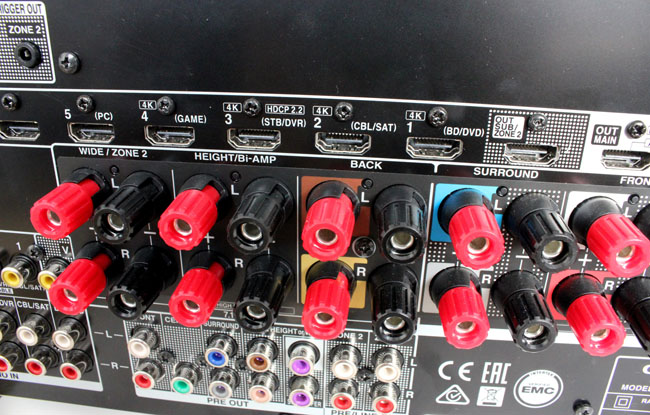
Read the labels and you'll be up and running in no time
During the initial set up you need to inform the Atmos receiver about your speaker configuration. While an auto-calibration routine – using Onkyo’s proprietary AccuEQ system and supplied setup mic – identifies live speaker connections, it’s up to you to specify Dolby Enabled projection speakers, or on/in-ceiling enclosures.
Onkyo sells a pair of small satellite speakers for the job, the SKH-410s. These bijou boxes are designed to perch on top of your front stereo pair, bouncing Atmos audio off the ceiling — and this is where the fun starts.
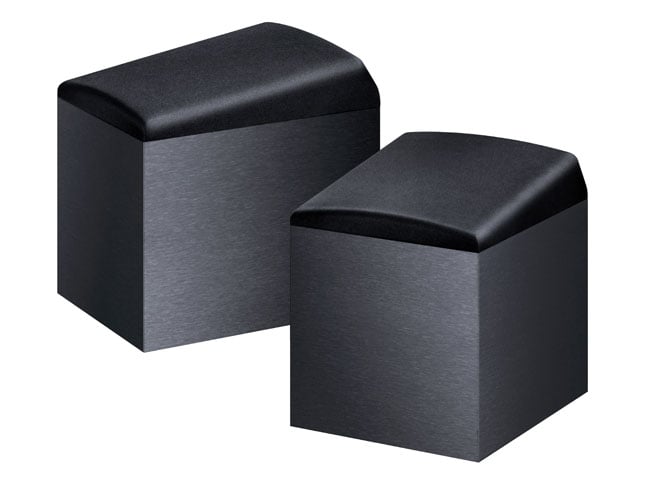
Onkyo SKH-410 Dolby Atmos enabled speakers
Unlike 5.1, which can impress from the get-go with little speaker placement finesse, Dolby Atmos is far trickier to get right. I spent a good week tweaking my speaker layout and levels before I felt the sound stage was sounding as it should.
Room with a view
It’s worth pointing out that my room is probably atypical. For starters I have a dedicated theatre (aka a spare room) with in-wall and in-ceiling speakers, so I couldn’t balance the tiny Onkyo up-firers on any existing enclosures. My solution was to place the Atmos speakers on their own speaker stands. The room itself is not overly large, around 3m x 5m, with a ceiling height of 2.4m. Screen and seating face off across the longer measure.
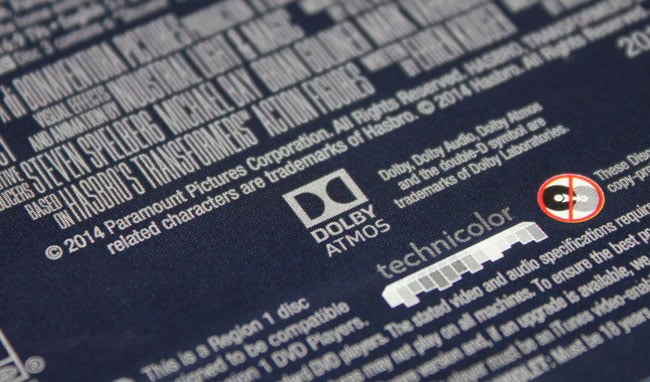
Transformers: Age of Extinction Dolby Atmos Blu-ray disc
I tested the system with the only Dolby Atmos software available, a Dolby Demo Blu-ray disc of theatrical stings and a BD import of Transformers: Age of Extinction.
It quickly became apparent that placing the upfiring speakers near the screen, where a standard left/centre/right speaker arrangement would be positioned, didn’t work. Any reflected sound was undetectable from my listening position some 3.5-4m away.
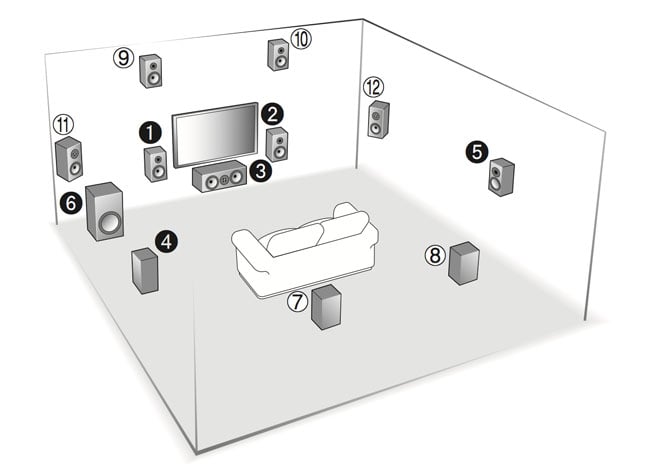
Dolby Atmos takes over the living room: 1/2 front, 3 centre, 4/5 surround, 6 sub. Users can wire up 7/8 surround back, 9/10 height and 11/12 wide speakers, but have to choose one pair for use at a time.
It wasn’t until they were 1.5m from my sofa, that these upfiring speakers eventually clicked. Had this been a living room, this would have been woefully impractical. Of course, other makes of Dolby Enabled speakers may well perform differently; we’ll know when they eventually come to market.
I also experimented with my in-ceiling speakers, re-purposing a pair of rears for Atmos, although this proved unsatisfactory. With my relatively low ceiling, I found the Atmos channel was localizing in a distracting way. One of the reasons I originally preferred THX-style dipole speakers for rear surround was the ability to sit in a null and negate nearby localisation. Dolby Atmos poses a similar conundrum.
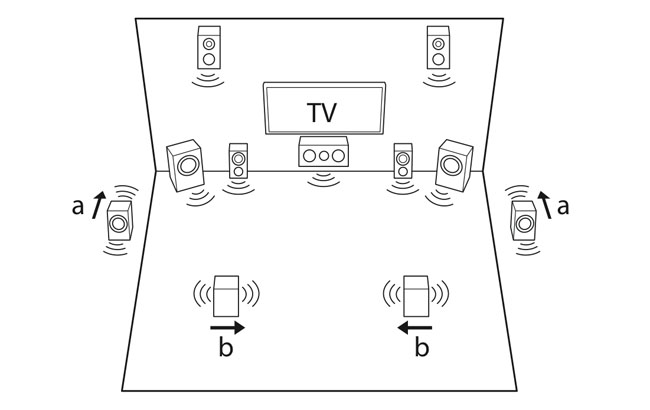
Atmos set-up with dipole speakers marked "a" and "b" for phase matching
While I haven’t yet given up tuning in my in-ceilings (time consuming experimentation with levels and phase required) my first impression is that for most users reflective Dolby Enabled speakers will give a more convincing, immersive effect.
So, in a nutshell: seven channel AV Receivers able to decode Atmos in a five front/back and two height speaker configuration (also known as 5.1.2, where the 'point one' is the LFE pre-out for deep bass from an attached subwoofer) are probably going to work best in relatively small rooms, where your upward firing Dolby Enabled speakers can be parked in a sensible position.
Larger rooms (and we’re not talking caverns) will probably need a much more expensive nine-channel receiver, capable of handling four height speakers (aka 5.1.4). In-ceiling speakers also seem better suited to high ceiling rooms, like dedicated faux-pro home theatres.
Some choice
So, is Dolby Atmos worth all the faff? Certainly, the Transformers: Age of Extinction Blu-ray is technically very impressive, but the impact of the Atmos mix is surprisingly subtle. The differences aren’t in the ceaseless sonic destruction, but with ambiance.
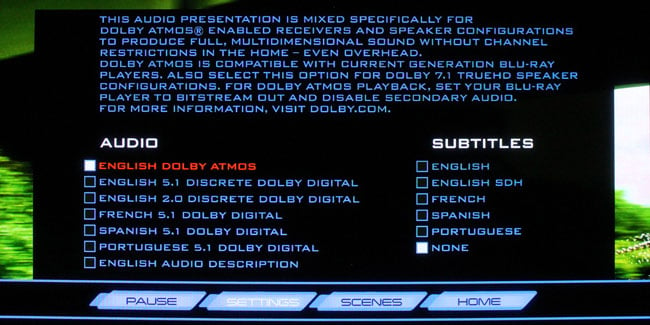
Sound choices: Dolby Atmos in the Blu-ray disc menu
In the scene early on, when TJ Miller throws a football before the discovery of the Optimus Prime truck, it bounces into the rear right surround channel in the traditional mix; in Dolby Atmos the ball appears to take a different trajectory. It’s thrown higher and sounds less like a panning effect.
Indeed, throughout Atmos appears to trade traditional steerage for a more naturalistic sonic umbrella. Well, as much as a movie featuring Dinobots can ever be deemed naturalistic.

Content is king, but malcontent will spread if the titles coming on stream don't improve
Quite whether you think such refinement is worth buying into when you consider the upcoming release slate is debatable, however. Incoming after Transformers are Hercules, Teenage Mutant Ninja Turtles, Step Up All In and The Expendables 3. The good stuff is notable only by its absence. Helpfully, the Onkyo TX-NR838 also has an upmix function for 5.1 soundtracks, which adds some intriguing but again subtle effects.
There’s no doubt that Dolby Atmos represents a significant step forward in multi-channel audio (and having lived with it I don’t want to go back), but a mainstream audience may prove difficult to convince.
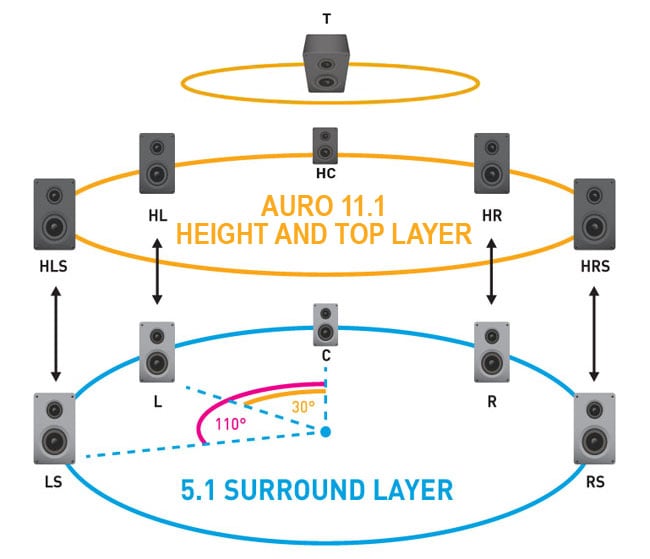
Auro 11.1 speaker array adds a height centre (HC) and a top (T) speaker which the older Auro 9.1 system lacks
Not that I think this 3D audio fad is going to run out of steam any time soon. Rival immersive sound format purveyor Auro-3D has just signed at least one AVR major, although software remains unannounced. One key problem facing Auro-3D is that the speaker configuration is quite different from Atmos, essentially two tiers of front/back speakers with an optional ceiling Voice of God.
Potentially the biggest threat to Atmos will come from old rival DTS, which is expected to announce that its MDA (Multi Dimensional Audio) 3D audio file format is heading to home AV at CES in January.
This new open object-based platform already has appeal for cinema exhibitionists not least because a single Digital Cinema Package (DCP) with MDA audio can deliver a soundtrack to any configuration and quantity of speakers. DTS MDA for the home will presumably do something similar and it shouldn't be too long before we find out for sure. ®
Steve May is a veteran AV journalist and senior editor at Inside CI.
